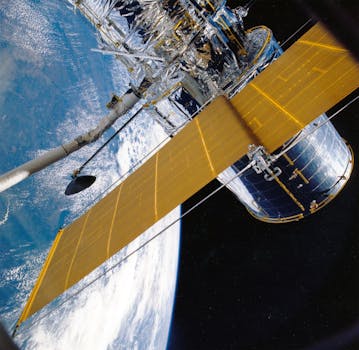GEO Satellites: Understanding the Technology and Applications of Geostationary Earth Orbit Satellites

GEO Satellites: Understanding the Technology and Applications of Geostationary Earth Orbit Satellites
GEO satellites, or Geostationary Earth Orbit satellites, are a type of satellite that orbits the Earth at an altitude of approximately 36,000 kilometers above the equator. At this altitude, the satellite’s orbital period matches the Earth’s rotational period, allowing it to remain stationary relative to a fixed point on the Earth’s surface. GEO satellites have become an essential part of modern telecommunications, navigation, and weather forecasting, and their applications continue to expand as technology advances.
The concept of GEO satellites was first proposed by scientist Arthur C. Clarke in 1945, and the first GEO satellite, Syncom 2, was launched in 1963. Since then, hundreds of GEO satellites have been launched, providing a wide range of services including telecommunications, television broadcasting, weather forecasting, and navigation. GEO satellites are particularly useful for providing coverage to large areas, such as entire countries or continents, and are often used for applications that require a high level of availability and reliability.
How GEO Satellites Work
GEO satellites work by transmitting and receiving signals to and from Earth stations, which are located on the ground. The signals are transmitted to the satellite through a large antenna, and the satellite then re-transmits the signals back to Earth, where they are received by another antenna. This process allows data to be transmitted over long distances, making it possible to communicate with people and devices located anywhere in the world.
The technology used in GEO satellites is highly advanced, with sophisticated systems for power generation, propulsion, and communication. The satellites are typically equipped with large solar panels to generate power, and use advanced propulsion systems to maintain their position and orbit. The communication systems used in GEO satellites are also highly advanced, with the ability to transmit large amounts of data at high speeds.
Applications of GEO Satellites
The applications of GEO satellites are diverse and continue to expand as technology advances. Some of the most common applications of GEO satellites include telecommunications, television broadcasting, weather forecasting, and navigation. GEO satellites are also used for a variety of other applications, including Earth observation, satellite radio, and search and rescue operations.
In terms of telecommunications, GEO satellites are used to provide internet connectivity, voice communications, and data transmission services to remote and underserved areas. They are also used to provide backup connectivity in the event of a disaster or outage, and to provide connectivity to ships and aircraft at sea and in flight.
Challenges and Limitations of GEO Satellites
While GEO satellites have many advantages, they also have some challenges and limitations. One of the main challenges is the high cost of launching and maintaining a GEO satellite, which can be tens or even hundreds of millions of dollars. Additionally, the signals transmitted by GEO satellites can be affected by atmospheric conditions, such as rain and solar activity, which can cause signal loss and degradation.
Another limitation of GEO satellites is the delay in signal transmission, which can be up to 250 milliseconds due to the distance the signal has to travel. This delay can be a problem for applications that require real-time communication, such as video conferencing and online gaming.
In conclusion, GEO satellites are a crucial part of modern telecommunications, navigation, and weather forecasting. Their applications continue to expand as technology advances, and they have become an essential part of our daily lives. While they have some challenges and limitations, the benefits of GEO satellites far outweigh the drawbacks, and they will continue to play a vital role in shaping the future of telecommunications and other industries.





